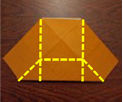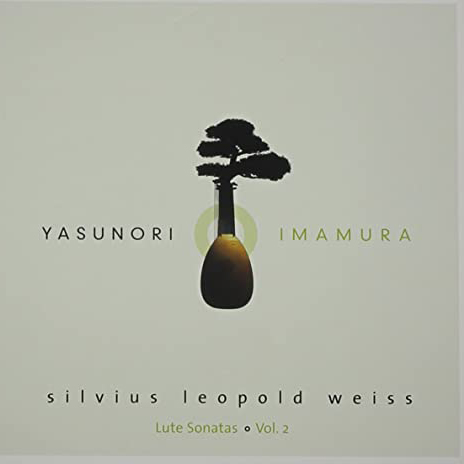Brand from Home | May 24, 2020
- Brand Library&Art Center
- May 24, 2020
- 5 min read

Music Playlists
Today's recommending listening includes showtunes favorites, Haitian folk music, Country Blues Project, and lute sonatas.
Get a free Glendale Library, Arts & Culture Library eCard instantaneously. It can be used to access our online resources including eBooks, eAudiobooks, eNewspapers, eMagazines, online classes, online tutoring, and learning games, as well as streaming movies and music, and more.Try listening to a streaming Playlist from Freegal Music, Naxos Music Library or Alexander Street free with your library card. Alexander Street will ask for an academic institution, use Glendale Public Library.
Streaming Music

The UCSB Library Cylinder Audio Archive is available online. Cylinders were the earliest commercial medium for recording and reproducing sound. The recordings in this collection span from the late 19th to the early 20th centuries.

Time Out has a regularly updated calendar of live-streaming concerts and DJ sets to enjoy from home.

The Lincoln Center At Home portal
includes a wide variety of virtual performing arts events for all ages.
Take a Tour of Brand

Travel back in time as Mr. and Mrs. Leslie C. Brand entertain on the afternoon of April 1, 1921 at America's first "aviation luncheon." The event was held at their palatial home in the Verdugo foothills and only fly-in guests were allowed. Join us for an audio-tour accompanied by historic images.
Art Inspiration - Try It at Home

Try some modular origami, part 2. Finishing the castle: turrets, roofs, and a special guest! A turret support allows you to add extra pieces (turrets) to the sides of your castle towers. Start by making a basic unit from part 1 and stop at step 7, which looks like this.

Turn your model 90 degrees. As with the basic unit, fold one side (the top one) into a pocket… but unfold the bottom part completely.

Gently open the big flap on the side of your piece, and flatten the model on both sides, keeping that little triangle on top in place. You will see that one side will have an extra bit of triangle hanging below the midline of the piece; tuck that up inside so that both sides match.

Bring up the bottom point as shown. Turn your model over.

Crease along these lines.

Bring the sides and the bottom up, following those creases.

Turn your model over again, and “release” the other side of it by untucking the triangle flap and opening it up.

Leaving that other end open, re-tuck the flaps closest to you, on both sides.

Then, re-tuck the other side back to the way it was, and you’re done! You’ve made a turret support.

The support attaches to your tower like this.

Then, add a basic unit. One of the unit’s flaps will stick into the pocket on the outside of the turret support, and the other flap will tuck into the pocket of the tower.
Next the Final Touch: Roofs.

Here’s how you make a roof! Start by folding and creasing your paper diagonally then horizontally.

With your paper folded horizontally, fold down the top right corner to meet your crease, as shown. Then turn the paper over and do the same thing on the other side.

Open up your paper. If you like, take a second and run your thumb over your horizontal crease.

Fold the top right corner of the paper down using the established diagonal crease, and then fold the whole thing in half.

Crease the triangle on the bottom left, and pull over one of the layers from the right, as shown. You should now have three layers of these kite shapes on one side, and one kite shape on the other.

Turn your model over.

Take two of those little triangle flaps on the bottom (which you have already creased) and slip them into the pocket of the kite shape underneath them.

Fold all your kite shapes over to one side, crease, and return.

Crease the bottoms of your model as shown below.

Open your model and reverse one of your creased sides so that they both look the same. The completed roof!

A roof attaches to a basic unit the same way everything attaches around here: by slipping the little flaps into the pockets.

The only “rules” of castle construction are that towers should be linked by basic units going cross-wise at some point, and if you’re going to make something fairly hefty, consider putting a little glue on your triangle flaps before you stick them into pockets to give your piece some more stability. Here’s a completely nonsensical castle for your viewing pleasure.

Since we’ve made it to the end of our origami adventure, here is your special guest: Larry the dragon! (What castle is complete without a dragon?)
If you want to make your own resident, you can find an instructional video by searching for “origami dragon” on YouTube. Jo Nakashima’s patterns for dragons are especially popular, and very challenging.
Have fun!
This castle pattern is the creation of internationally recognized origamist Ed Sullivan, and can be found in Complete Origami (1990) by Eric Kenneway. Share your creation #brandfromhome
Staff e-Recommendations

THE LOUVRE, a documentary produced by filmmaker Lucy Jarvis is available on Hoopla. Hosted & narrated by actor Charles Boyer, it is a deep dive into the history of the Louvre Museum, geographically at the heart of Paris with its origins dating back over 800 years.
The documentary shows a model of the Louvre as it expanded and changed through time, housing its royal collections. It was described as “a Golden Prison” which eventually housed close to 300,000 objects. When the French Revolution happened, the Assembly declared that the Louvre collections would become national property, and it opened to the French public as a museum in 1793.
A fascinating transformation of the museum took place in 1939 at the beginning of World War II. With imminent danger of invasion by the Nazis, the Louvre removed most of the artworks and hid many of these treasures in chateaux in various regions of France. At the end of the war, the artworks were laboriously returned to the Louvre.
Though this is a historical survey of a great French monument, filmed more than 2 decades prior to the construction of I.M. Pei’s Louvre Pyramid (1988), it is a fascinating look at the Louvre. It was unprecedented that American filmmaker Lucy Jarvis was given permission by the French government to film inside the museum. Using color 35 mm film (not the norm in those days), we get an intimate look at the interior of this most revered institution. Because the present day Louvre is always full of people, an added bonus is a look into the vacant galleries while it was closed to the public. I would highly recommend this documentary. -CV

Lutoslawski Symphonies 3 & 4, Les Espaces du Sommeil, Los Angeles Philharmonic, Esa Pekka Salonen. This is one of my favorite CDs from the 1990s, which is now available streaming on Naxos Music Library. Lutoslawski was a towering influence in the orchestral music of the late 20th century and this recording features the Los Angeles Philharmonic conducted by Esa-Pekka Salonen. The Symphony No. 4 was commissioned and premiered by the LA Phil on February 5, 1993 with the composer conducting (I was in the audience). Since then, this piece has been performed many times around the world. Lutoslawski’s orchestration is brightly colored and a feast for the ears. The Symphony No. 3 (1973-1983) is even more brightly colored and slightly longer. It has a very satisfying climactic moment in the second movement reminiscent of the late romantic period. Les Espaces du Sommeil is a piece for baritone and orchestra using a poem by surrealist French poet Robert Desnos. It was premiered by famous baritone Dietrich Fischer-Dieskau and the Berlin Philharmonic in 1978 but John Shirley-Quirk is absolutely wonderful on this recording. Esa-Pekka Salonen’s conducting is exciting and the Sony recordings are excellent. Gustavo Dudamel has conducted the Symphony no.4 with with the Los Angeles Philharmonic many times as well. -BW
Covid-19 Resources
Reliable information about the coronavirus (COVID-19) is available from the World Health Organization, the California Department of Public Health and Los Angeles County Public Health Department and City of Glendale.












Comments